October 18, 2011—January 15, 2012
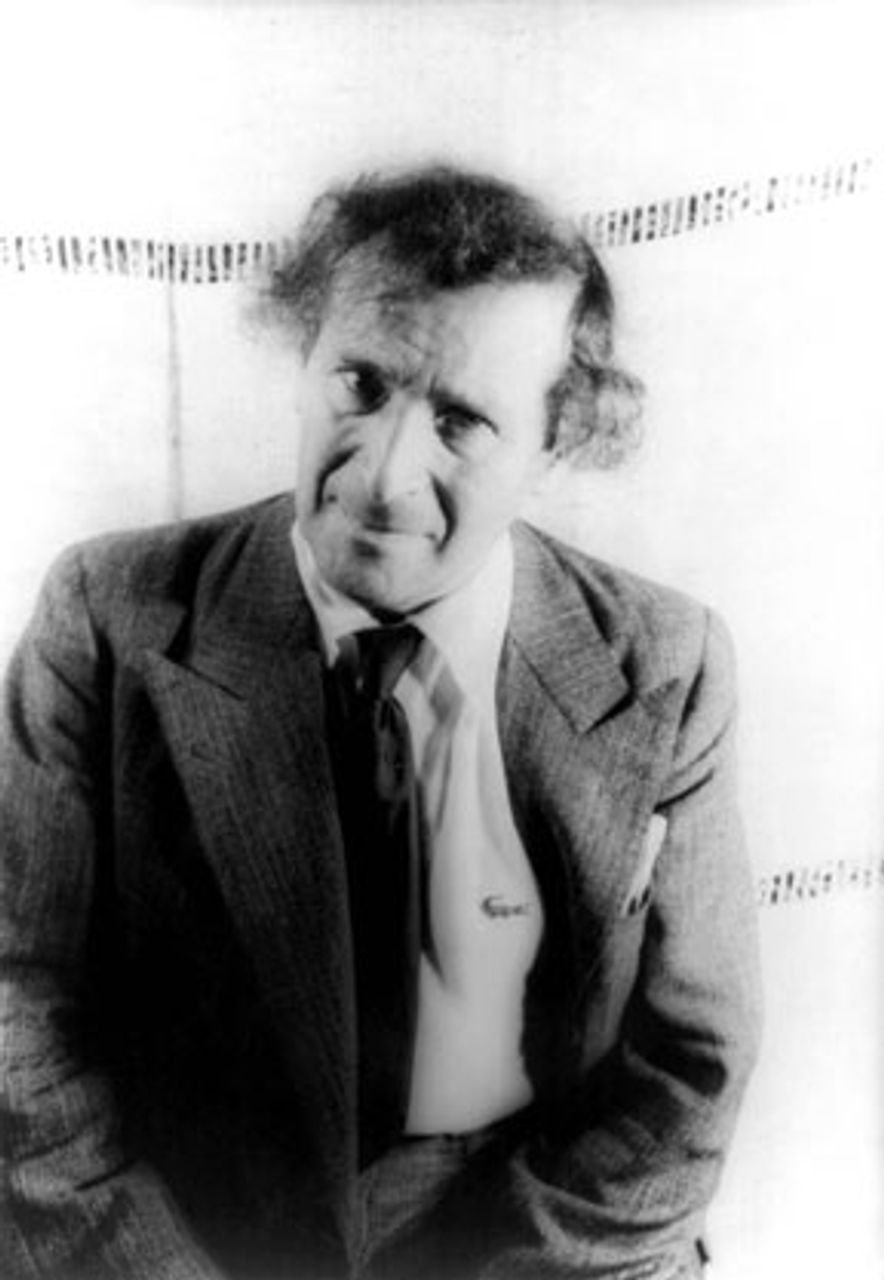 Marc Chagall, July 1941 [Photo: Carl Van Vechten]
Marc Chagall, July 1941 [Photo: Carl Van Vechten]The Art Gallery of Ontario (AGO) in Toronto is currently hosting a fascinating exhibition entitled “Chagall and the Russian Avant-Garde,” from the collection of the Centre Pompidou in Paris. The show gathers 118 works by artist Marc Chagall (1887-1985) and his Russian contemporaries, focusing on the period around the First World War and Russian Revolution. These works highlight the radical changes that occurred in Russian and European art and culture of the period, changes bound up with momentous political developments, including the socialist movement that aimed to sweep away the old order.
Born and bred in Vitebsk, a predominately Jewish town in what is now Belarus, Chagall struggled under a Czarist regime where Jews were heavily restricted and held back from following any kind of intellectual or artistic pursuit. His resourceful mother was able to buy Chagall a place in school where, for the first time, he was introduced to the concept of Art, eventually heading to Paris to study the French impressionists and Italian and Dutch masters on display at the Louvre museum.
After absorbing the experimental innovations of the French school of painters in Paris, Chagall came back to Russia at the outbreak of World War I and would stay for nine years. During this period he would produce some of his most inspired works, buoyed by the intense positive creative energy of the Russian Revolution. Chagall connected with likeminded Russian artists, some of whose works are also on display at the AGO, including paintings by Natalia Goncharova and Mikhail Larionov and the better-known abstract works by Kazimir Malevich and Vasily Kandinsky.
Chagall’s paintings are characterized by dreamlike images in which the laws of gravity are suspended and animals and humans mingle with symbolic images reflecting in part the folk culture of life in Vitebsk. Chagall could make use of intensely personal subjects to communicate universal truths and emotions. His 1914 work “Newspaper Vendor” depicts the arresting image of a man delivering news of the War that has just begun, but which is already unpopular, as reflected in the vendor’s pained and weary face, expressing the despair of his generation.
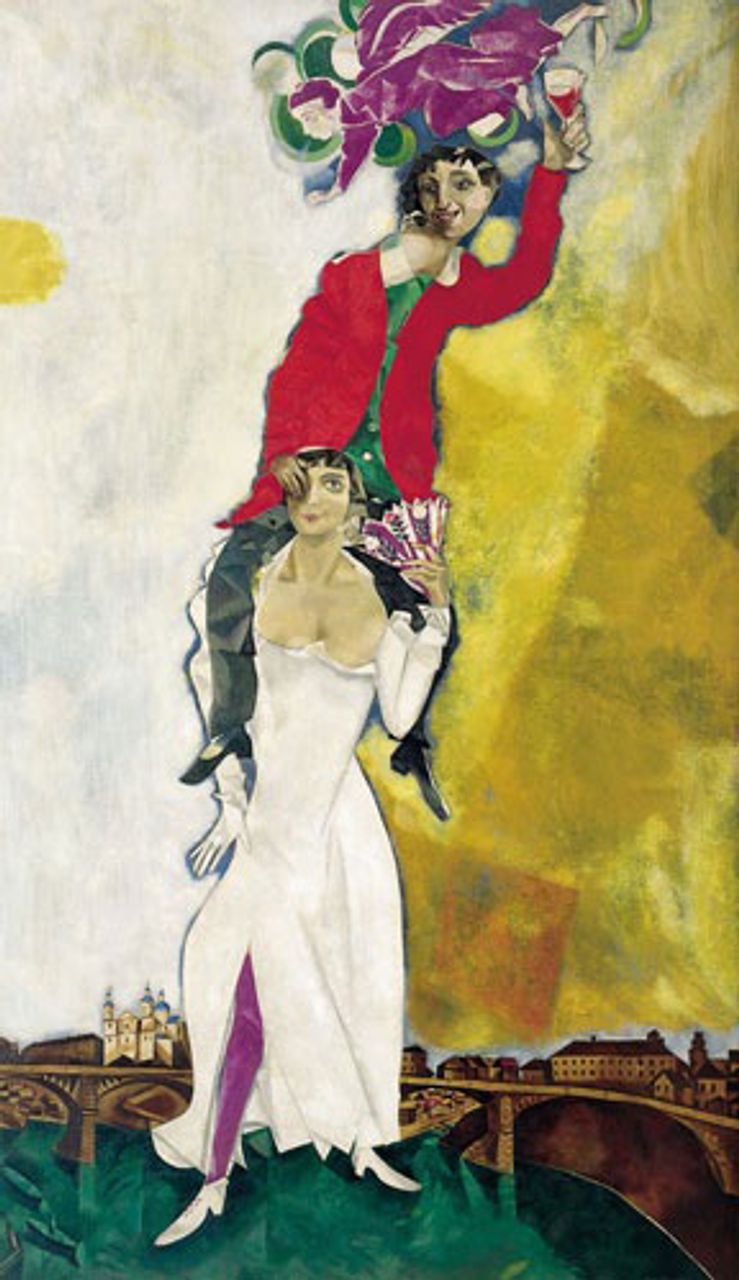 Marc Chagall
Marc ChagallRussian, 1887-1985
Double Portrait with Wine Glass (Le double portrait
au verre de vin), 1917-18
oil on canvas
235 x 137 cm
Collection of the MNAM, Centre Pompidou, Paris
©Adagp/Centre Pompidou, Mnam-CCi/Dist. RMN
SODRAC 2011 and ADAGP 2011, Chagall
One of the more prominent canvases is his “Double Portrait with Wine Glass” (1917), which depicts an elated, love-struck Chagall floating on the shoulders of his new bride. One gets the sense of an artist in his prime, embracing the hopes, joys and optimism of a new revolutionary era.
Following the Russian Revolution, liberated Jews were given unprecedented opportunities to participate in the political and cultural life of the young workers’ state. The remarkable Commissar of Enlightenment, Anatoly Lunacharsky, appointed Chagall as Commissar of Art in Vitebsk where he founded the distinguished Peoples Art College. Soon Chagall moved to Moscow where he was hired to design costumes, murals and sets for the popular Moscow State Jewish theatre. A sample of these designs is on display in the AGO exhibition.
Not much has been written about Chagall’s decision to leave the Soviet Union in 1922. It is suggested that his idiosyncratic and personal style was at odds with the needs of the new Soviet Union. No doubt life was extremely demanding and convulsive. Yet personal and experimental works continued to be produced in the USSR throughout most of the 1920s.
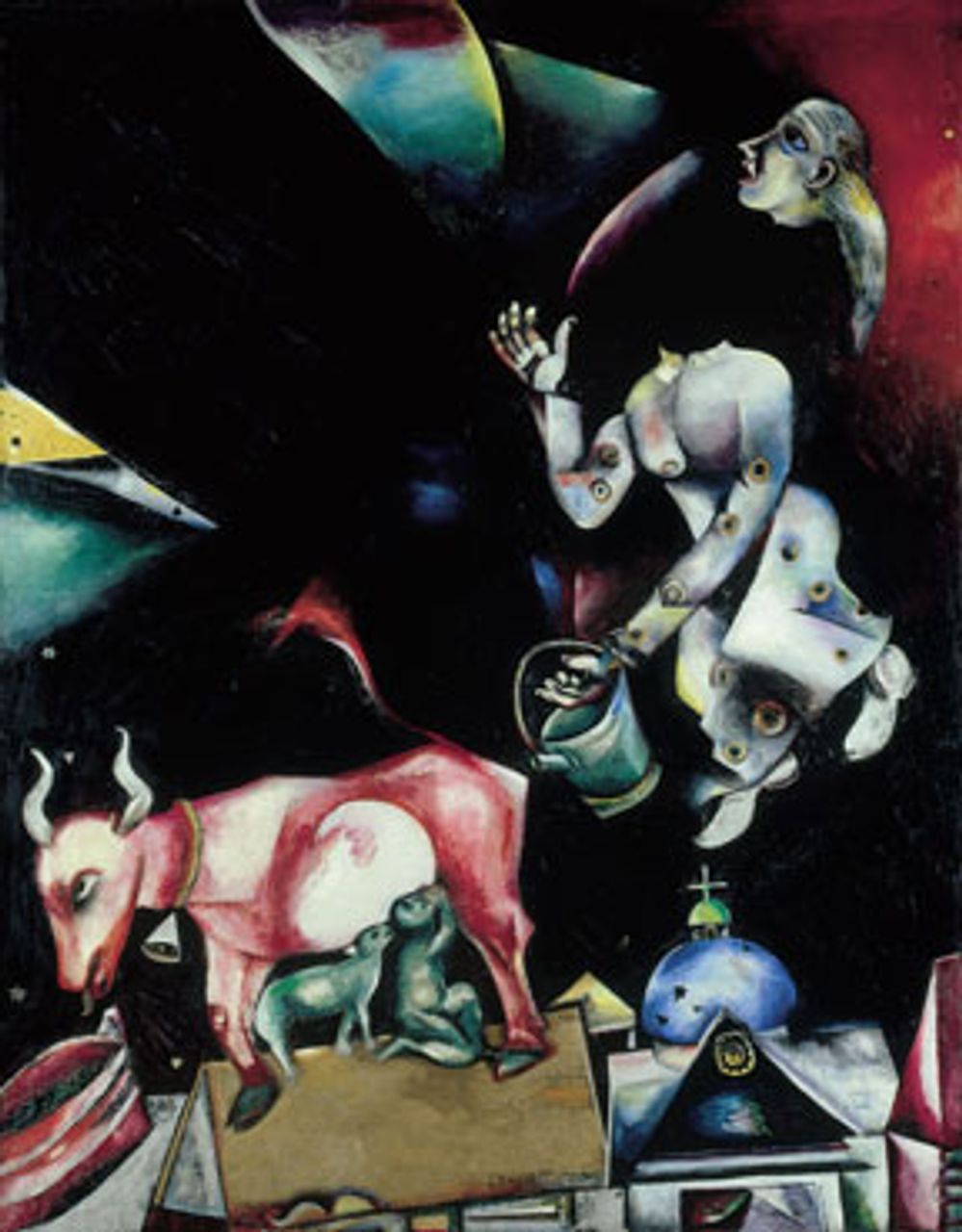 Marc Chagall
Marc ChagallRussian, 1887-1985
To Russia, Donkeys and Others (À la Russie, aux
ânes et aux autres), 1911
oil on canvas
157 x 122 cm
Collection of the MNAM, Centre Pompidou, Paris
©Adagp/Centre Pompidou, Mnam-CCi/Dist. RMN
SODRAC 2011 and ADAGP 2011, Chagall
Whatever the case, it must have been difficult for an artist with a growing international reputation to remain in the young and besieged worker’s state, still recovering from the horrors of famine and civil war. With the help of Lunacharsky, Chagall was able to obtain a passport and leave the Soviet Union only to enter the turbulent political and social storm that was Europe between the wars. First, Chagall went to Berlin, where inflation made the proceeds from his paintings virtually worthless, and later to Paris, until the German invasion and conquest drove him into exile in the US. He eventually returned to Europe in 1948.
The exhibition also attempts to place Chagall’s work in the context of a flowering avant-garde Russian culture spurred by a revolution that was carrying its message of freedom into the realm of the arts. One room is dedicated to a collection of works from a variety of media exemplifying this bold new experimental spirit. (See AGO essays: http://www.ago.net/essays)
Two sculptures entitled, “Structure in Space,” by the Stenberg brothers (Vladimir and Georgii) hint at the aesthetic qualities of what would soon become the Constructivist movement, with its free use of geometric shapes, bold angles and organic curved lines. These works were produced in 1918 and created to commemorate the Revolution. The pieces served no utilitarian purpose other than bringing art and culture down to the streets and to the masses, no longer the private domain of the bourgeois.
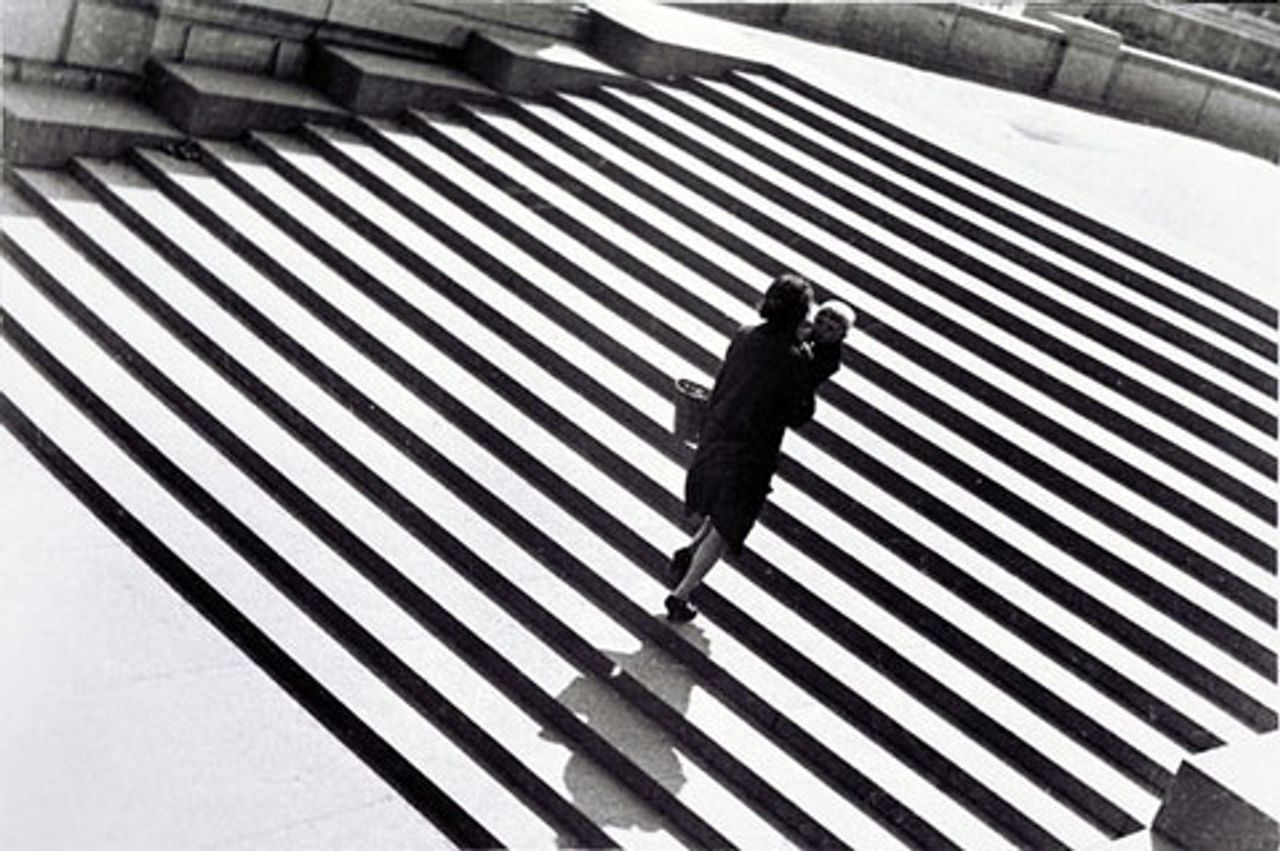 Aleksandr Rodchenko
Aleksandr RodchenkoRussian, 1891-1956
L'escalier (The Staircase), 1930
gelatin silver sprint
29.6 x 42.0 cm
Collection of the MNAM, Centre Pompidou, Paris
©Adagp/Centre Pompidou, Mnam-CCi/Dist. RMN
Also on display are works showcasing the bold new experiments in the modern media of photography and film. A few works by Aleksandr Rodchenko show an early embrace of the exciting possibilities in photography and photomontage. In the same room we also have a looped screening of Dziga Vertov’s Man with a Movie Camera (1929), with its arresting images of 1920s’ Soviet life, featuring new film effects such as freeze frame, split screen and slow and fast motion.
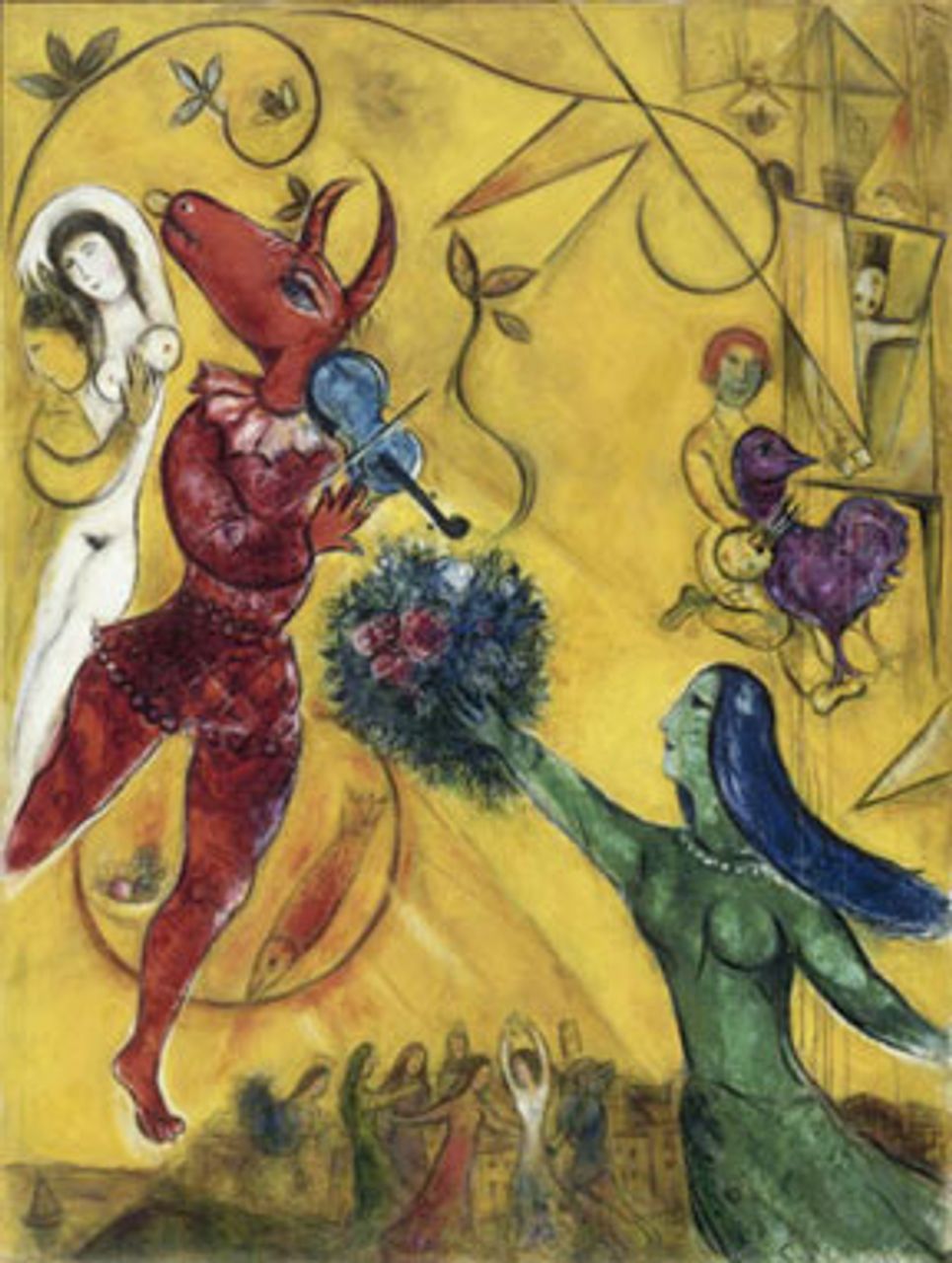 Marc Chagall
Marc ChagallRussian, 1887-1985
Dance (La danse), 1950-52
oil on canvas
238 x 176 cm
Collection of the MNAM, Centre Pompidou, Paris
©Adagp/Centre Pompidou, Mnam-CCi/Dist. RMN
SODRAC 2011 and ADAGP 2011, Chagall
Missing in the AGO exhibition is any reference to the shift in cultural policies that occurred under Stalin in the late 1920s, and then with a vengeance, in the 1930s. This shift toward what was ludicrously termed “Socialist Realism” represented a conscious betrayal of all that was courageous and revolutionary in these early works. It marks a dark period in Soviet history when all artistic expression was subordinate to the needs of the Stalinist ruling caste. Trotsky summarizes this dreadful state when he writes in his 1938 essay, “Art and Politics in our Epoch”: “The official art of the Soviet Union—and there is no other over there—resembles totalitarian justice that is to say, it is based on lies and deceit.”
A truly liberated Art is one, which is free to be, in Trotsky’s words, “a protest against reality, either conscious or unconscious, optimistic or pessimistic”, and it is this, which “forms part of a really creative piece of work.”
The AGO exhibition is a further indication of renewed interest in this exciting period of world cultural history. However modest in scope, “Chagall and the Russian Avant-Garde” provides clear evidence that in the early days of the Russian Revolution artists were not bogged down by the oppressive and false tenets of Stalinist “Socialist Realism,” but rather liberated to produce some of the boldest and most forward-thinking art works of the 20th century.
